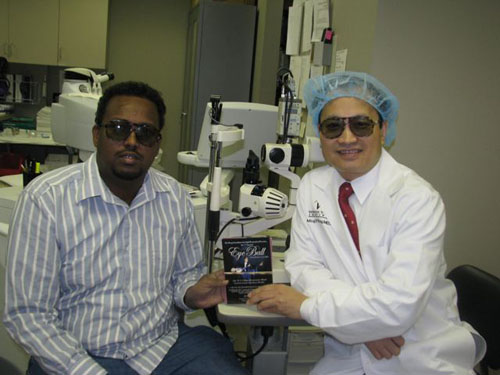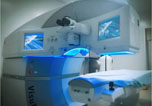- Over 55,000 LASIK and cataract procedures (including on over 4,000 doctors)
- The FIRST center in TN to offer Laser Cataract Surgery
- Introduced bladeless all-laser LASIK to the state
- Implanted the state's first FOREVER YOUNG™ Lens
- The first surgeons in the US to perform a new Intacs surgery to treat keratoconus
- Helped patients from 40 states and 55 countries
- International referral center for cataract surgery and LASIK complications
- Read Dr. Wang's book: LASIK Vision Correction
Why did you decide to have LASIK? Why did you choose Dr. Wang? How has your life changed since your LASIK procedure?
What is your advice for people considering LASIK?
Click to read more
| Article Library | Print This Page |
Mid Tennessee Edition — World’s First 3D LASIK Performed The new 3D image-guided high-definition microsurgical technology improves the quality of LASIK surgery
Wang Vision 3D Cataract & LASIK Center, Nashville, Tennessee

Dr. Ming Wang of Wang Vision Cataract & LASIK Center, Nashville, TN, became the first surgeon in the world to perform a 3D LASIK procedure. The first such ground-breaking surgery took place at Wang Vision Cataract & LASIK Center on May 27, 2011 and utilized an off-label use of the TrueVision® 3D high-definition, real-time, stereoscopic microsurgical technology.

The world’s first 3D LASIK patient was Mr. Farah Jai-Aden, a 28-year-old truck and taxi driver from Atlanta, GA. At his first post-operative visit, he could already see better than he ever had before, even with glasses or contact lenses! Mr. Jai-Aden was very pleased with his new 3D vision!
“We were very excited to be the first in the world to perform the 3D image-guided high-definition LASIK procedure,” said Dr. Wang, who is a clinical associate professor of ophthalmology for the University of Tennessee and the director of Wang Vision Cataract & LASIK Center, Nashville, TN.
LASIK is a surgical procedure that corrects nearsightedness, farsightedness and astigmatism. Since the advent of LASIK 20 years ago, nearly 20 million LASIK procedures have been performed worldwide. However, despite the popularity of the procedure, the technology itself that has been used for LASIK has remained largely unchanged for many years.
The new 3D image-guided high-definition microsurgical technology represents an innovative improvement of LASIK. Dr. Wang explained, “In a standard LASIK procedure, the surgeon looks through a traditional microscope with the naked eye. What you see is what you get. There is no image processing or signal enhancement. Therefore, since the eyeball is very small, there is limited resolution and accuracy in the surgical procedure. In contrast, for the new 3D image-guided bladeless all-laser LASIK procedure, the surgeon wears a pair of 3D glasses, and uses a high-definition microsurgical system, which provides a stereoscopic and signal-enhanced view of the entire surgical field. It allows the surgeon to achieve more precision and accuracy with the laser focusing of the eye, and thus improves the quality of LASIK surgery.”
Our new texbooks
A 501c(3) charity that has helped patients from over 40 states in the US and 55 countries, with all sight restoration surgeries performed free-of-charge.




















